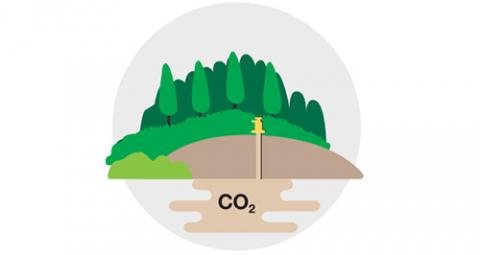14/11/2020 News
Toward Net Zero: underground storage of CO2 explained in a short film
It’s all new! Thanks to the R&D teams at the Total PERL in Lacq, find out about all the different steps in the process from site assessment to injection and control.

To meet the challenge of Net Zero, Total draws heavily on its R&D department, which spearheads the Group’s energy transition.
One of the solutions chosen by Total lies in the development of innovative, practical and safe technologies for CO2 capture and permanent underground storage at depth. The process is called CCS.
According to international experts, CCS could represent 2,800 Mt CO2 per year in 2050, compared to the current global volumes that stand at around 35 Mt CO2 per year.
HOW does it work?
How is the right site chosen and how are its potential storage capacities evaluated? How is CO2 injected into the reservoir? And once it has been injected, how is it monitored?
The teams from the Platform for Experimental Research at Lacq have chosen to create a short film to present the different phases in an underground CO2 storage project.
Plunge into the heart of a geological reservoir!
A European first at Lacq in 2010
On the Induslacq platform in 2010, Total developed a pilot CO2 capture, transport and storage project, a first in Europe. It consisted of a facility representing an entire CCS chain, capturing the CO2 from a steam generation unit, then its treatment and storage in a reservoir on site.
Since 2017, the Group has stepped up the pace and switched to the industrial phase by developing a large-scale CO2 storage project with Equinor and Shell on the Norwegian continental shelf. The Group is also a partner on a CCS project for the steel industry.

The energy transition means that processes have to be adapted, new materials and technologies mobilized, data intelligence used, etc. R&D is a key factor in the long-term shift toward a new energy mix, and at Total, 40% of research efforts are ploughed into projects dedicated to decarbonizing the energy mix.
To find out more, take a look at the educational feature report presented by PLANETE ENERGIE:


